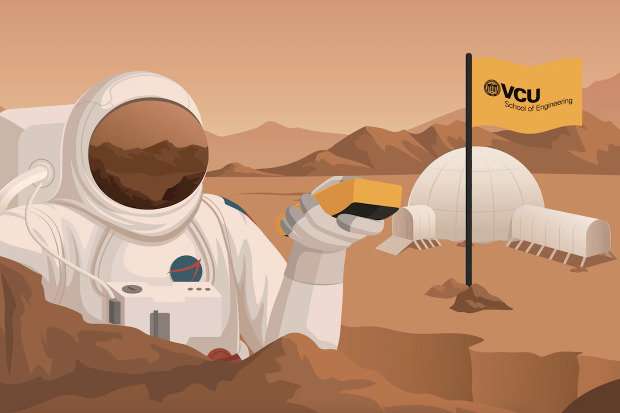Researchers study impact of space radiation on bone and muscle health

New research by Henry J. Donahue, Ph.D., chair of the Department of Biomedical Engineering and School of Engineering Foundation Professor at the VCU School of Engineering, suggests that space radiation may cause astronauts in outer space to lose additional bone but not more muscle.
The findings raise intriguing questions about the relationship between bone and muscle, especially for humans on Earth dealing with age-related bone and muscle loss.
While in the reduced gravity of space, astronauts lose bone and muscle from their legs, hips and lower backs.
"Bone is a very dynamic tissue," said Donahue, who is principal investigator of a project funded by NASA and the National Space Biomedical Research Institute. "As more demands are put on it, it gets bigger to meet those demands." On the other hand, with fewer demands in microgravity, "your body won't waste time building bone."
As NASA prepares for deep space travel, astronauts will also face increased, prolonged exposure to space radiation. Donahue said that measures to protect against radiation, such as the "big lead vests that they put on you at the doctor's office," would not be practical on missions to Mars.
In the first study of its kind, Donahue's team investigated the combined impact of space radiation and microgravity on bone and muscle, hypothesizing that radiation would exacerbate bone and muscle loss caused by microgravity. Researchers examined mice whose movements were restricted—an experience similar to microgravity—and those exposed to simulated space radiation. What they found was that while microgravity alone led to both bone and muscle loss, radiation alone did not.
"Radiation plus microgravity amplifies the negative effect of microgravity on bone, but does not affect muscle loss," Donahue said. "It's as if exposure to radiation itself doesn't affect bone, but it makes it more sensitive to the negative effects of microgravity."
The study, "Simulated space radiation sensitizes bone but not muscle to the catabolic effects of mechanical unloading," appears in the August 2017 issue of PLOS ONE. Its findings suggest that astronauts on extended space travel missions would have significant bone and muscle complications. Researchers want to discover how to maintain bone and muscle health during spaceflight and learn what preventive exercises could help.
The loss of bone and muscle experienced by astronauts in microgravity is similar to what happens as people age, Donahue said, noting that as lifespans have grown thanks to medical advances, the issue has become more prevalent. Older people, he said, "fall more, they break their bones more. That's a huge problem. Understanding the relationship in microgravity between bone and muscle has relevance to the effect of aging on muscle and bone."
Donahue said the next part of the project will be a bioinformatics study to examine any genetic variability induced by microgravity or radiation in bone and muscle.
More information: Andrew R. Krause et al. Simulated space radiation sensitizes bone but not muscle to the catabolic effects of mechanical unloading, PLOS ONE (2017). DOI: 10.1371/journal.pone.0182403
Journal information: PLoS ONE
Provided by Virginia Commonwealth University





















